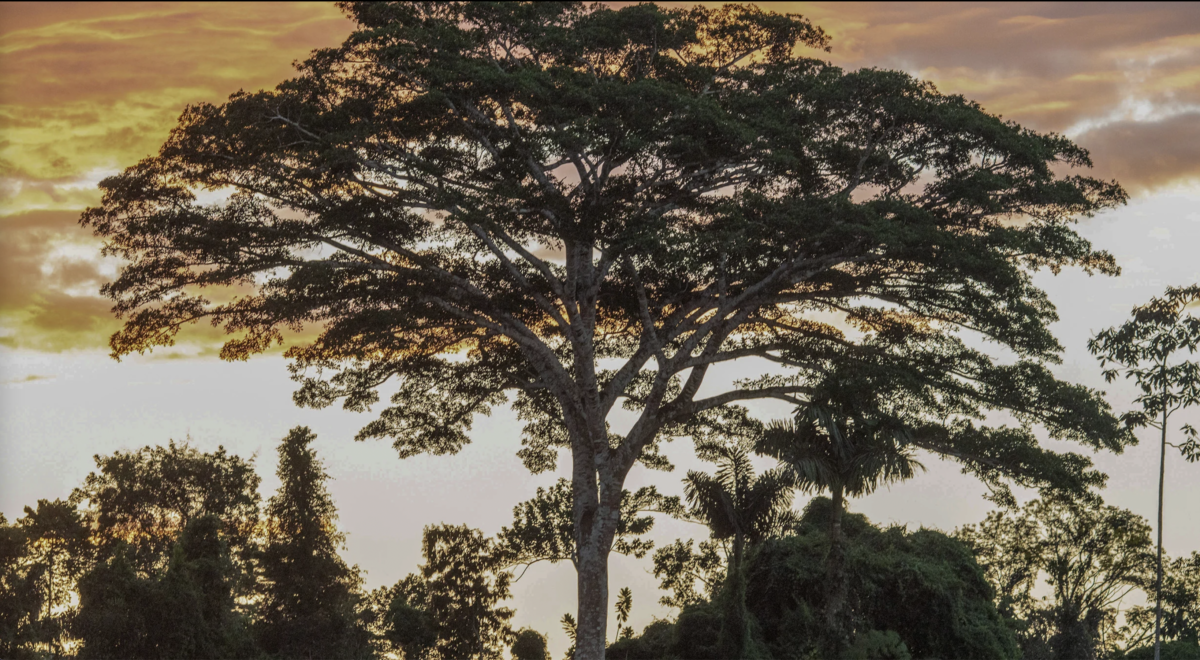
Despite decades of social and environmental campaigns aimed at protecting the Amazon, the threats now are greater than they have ever been, thanks to the relentless expansion of activities such as agriculture, mining, energy development, logging and drug trafficking.
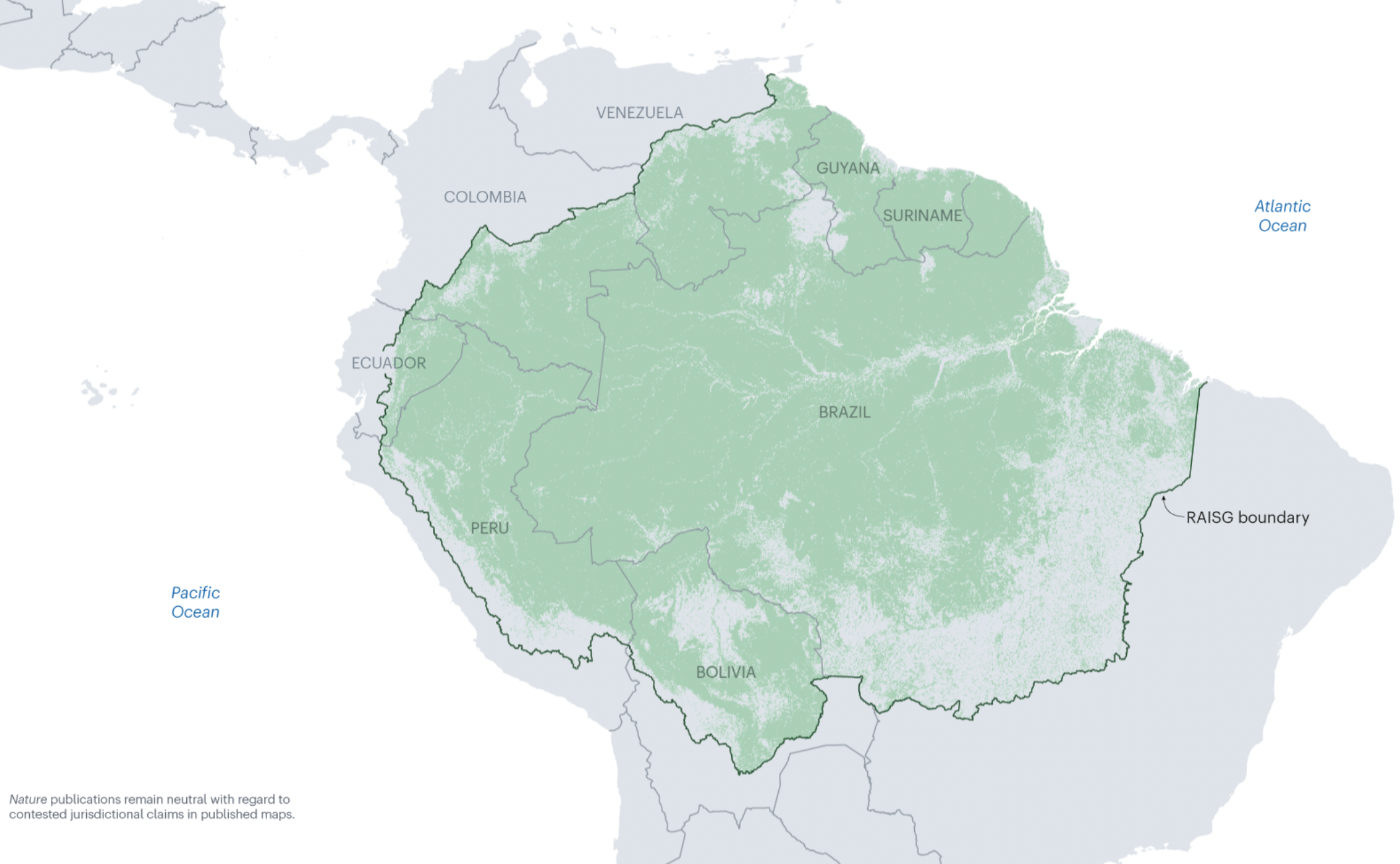
The Amazon basin holds Earth’s largest rainforest and is home to some 47 million people. Its river system produces 20% of the world’s fresh water and the rainforest contains around 100 billion tonnes of carbon – equal to about 10 years of global carbon emissions.
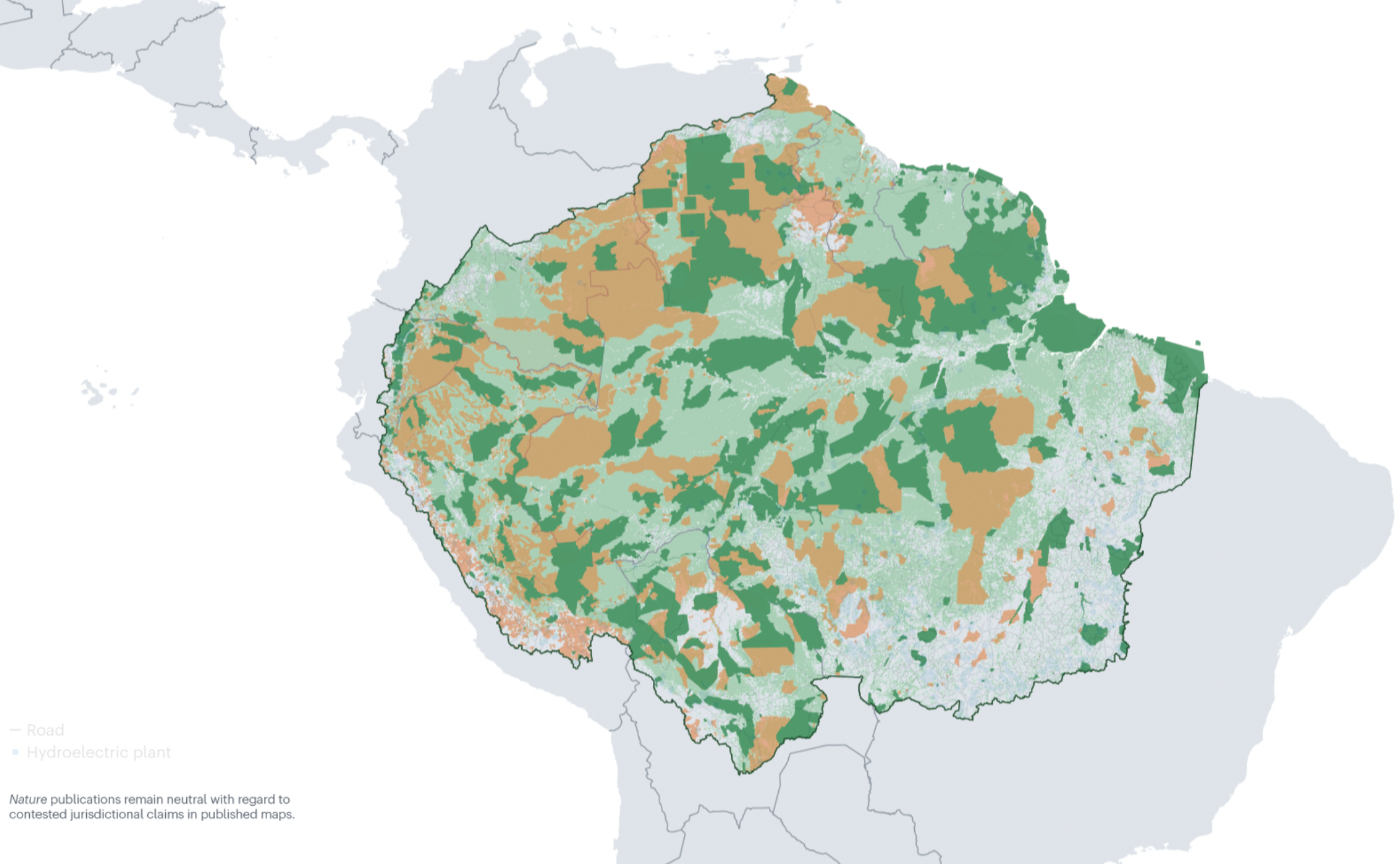
Nearly one-quarter of the Amazon basin has been designated for various types of protection. Together with Indigenous lands, the total protected area accounts for around 47% of the Amazon.
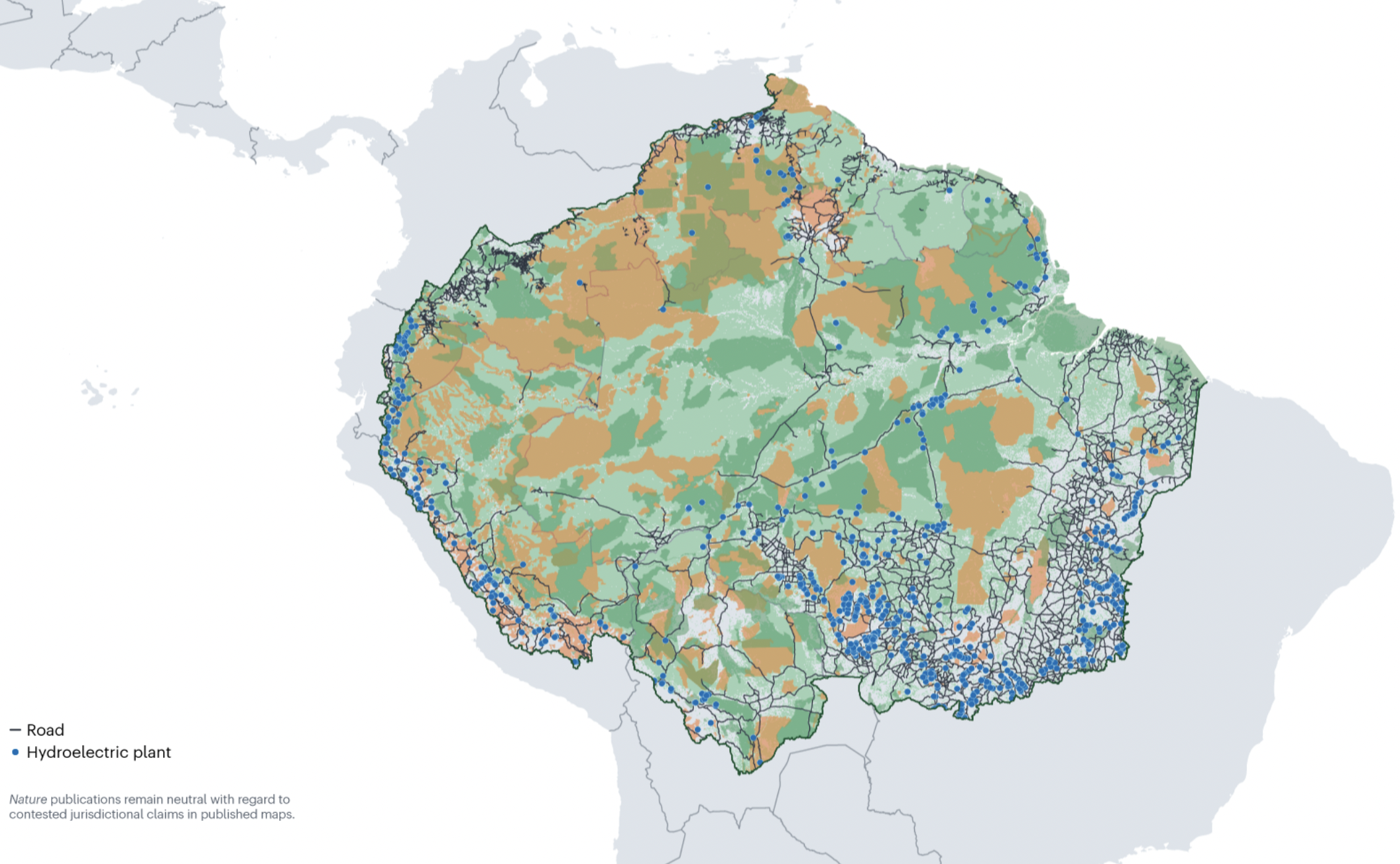
A spiderweb of more than 96,000 kilometres of roads across the Amazon. As of 2020, there were 177 hydroelectric plants in operation and another 184 planned. Research shows that such infrastructure increases deforestation.
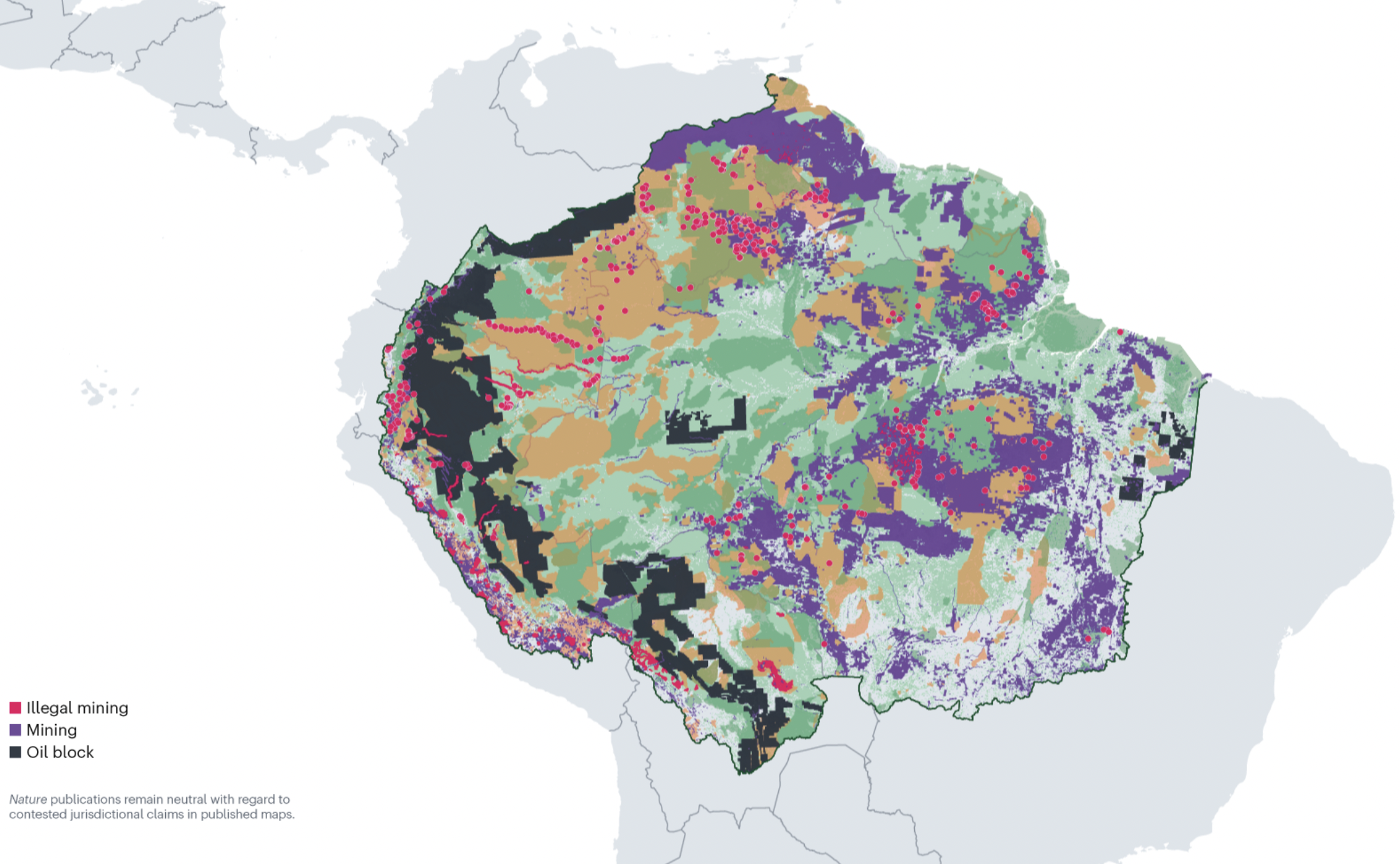
Oil blocks cover nearly 800,000 square kilometres across the Amazon. These include areas where companies are producing petroleum and others that have been leased out for such activity or have potential for future production.
Mining areas include lands that hold potential for future production and cover more than 1.4 million square kilometres, more than half of which are under active exploitation and exploration. Dots indicate illegal mining.
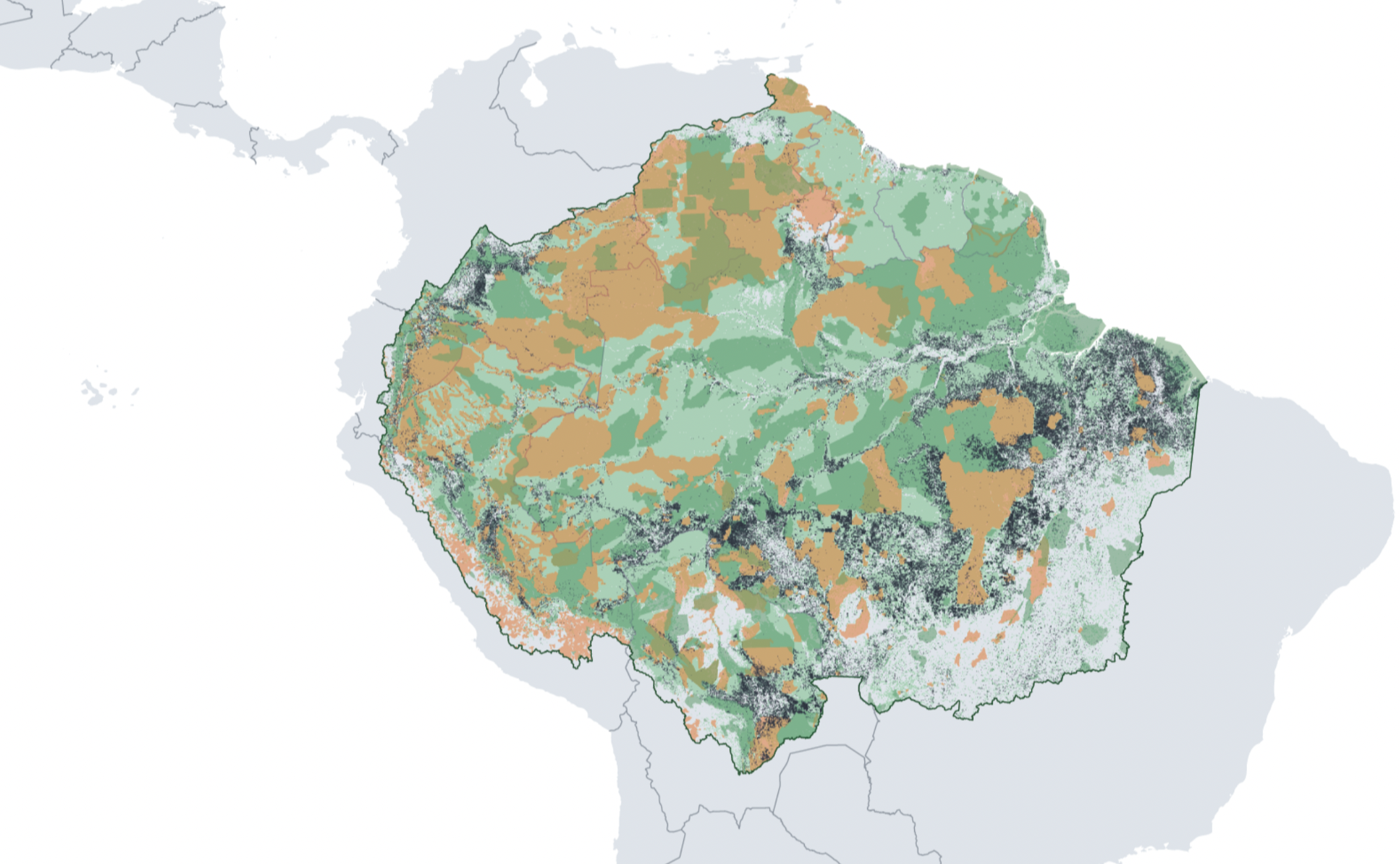
The extent of deforestation, shown here between 2000 and 2020, peaked in 2003 when more than 49,000 square kilometres of land was razed. It then declined and levelled off before spiking anew after 2015. Since 1985, the area dedicated to agriculture, which is responsible for 84% of Amazonian deforestation, has tripled.
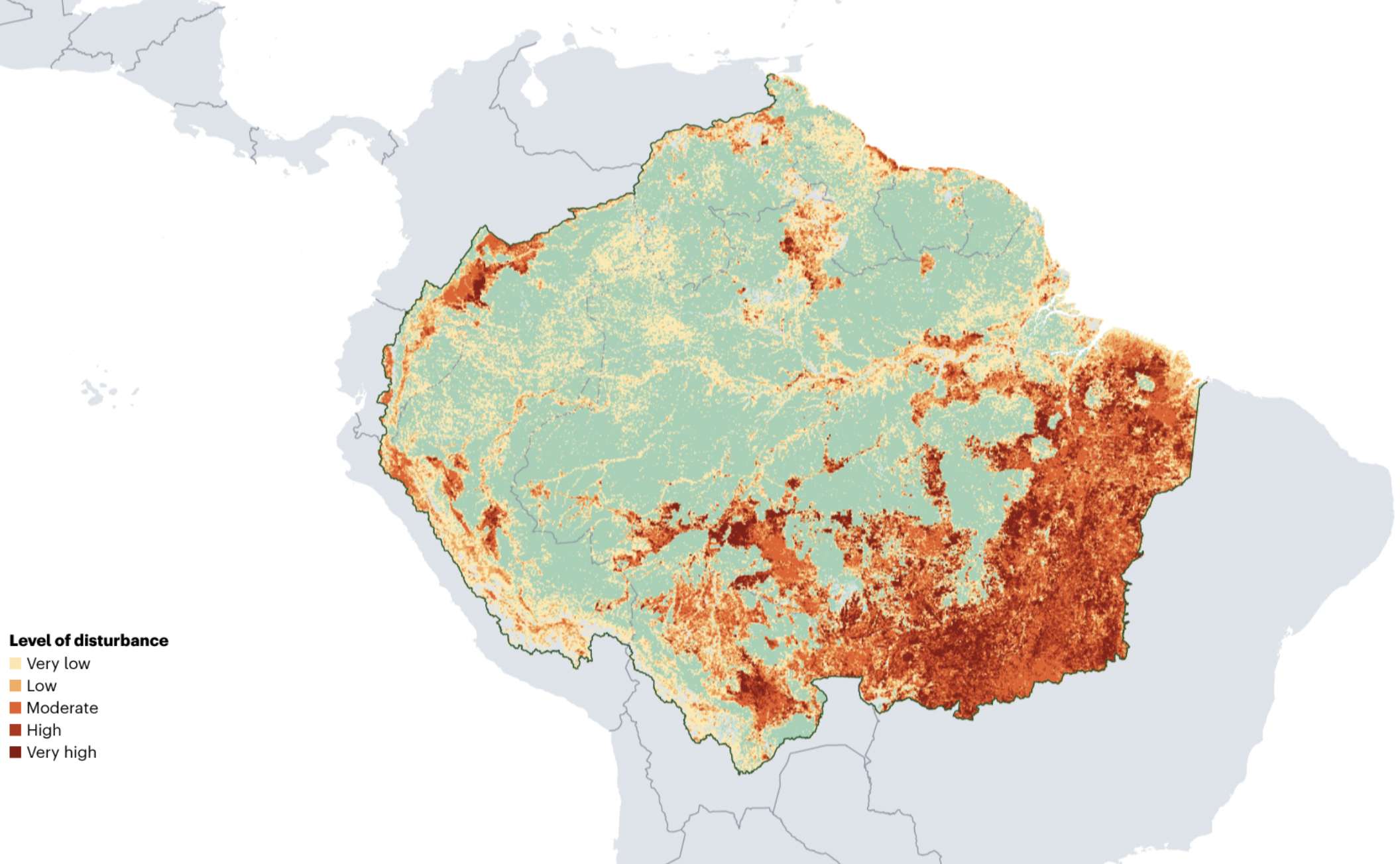
An index combines human threats to show which areas have been affected the most. A substantial portion of the Amazon shows signs of moderate to very high disturbance.